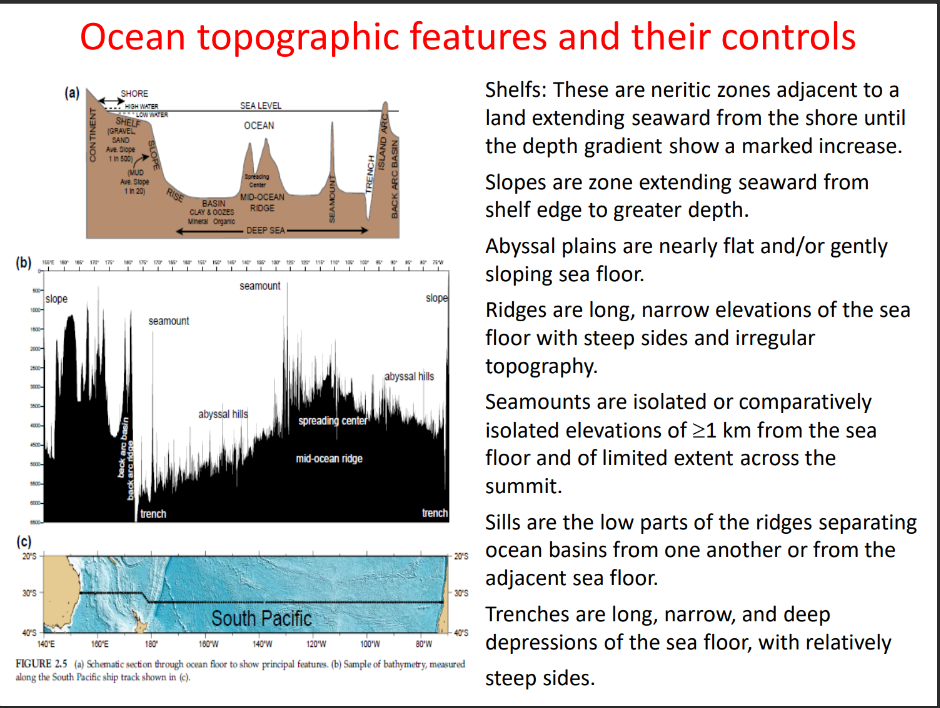What are the different ocean topographic features and their characteristics?

Understand the Problem
The question is asking for an explanation of the different ocean topographic features, including shelves, slopes, abyssal plains, ridges, seamounts, sills, and trenches, along with their characteristics. It aims to discuss the morphology and arrangement of these features as shown in the accompanying diagrams.
Answer
Continental shelves, slopes, abyssal plains, ridges, seamounts, sills, and trenches.
The final answer is as follows: The main ocean topographic features include continental shelves, slopes, abyssal plains, ridges, seamounts, sills, and trenches.
Answer for screen readers
The final answer is as follows: The main ocean topographic features include continental shelves, slopes, abyssal plains, ridges, seamounts, sills, and trenches.
More Information
These features represent various parts of the ocean's topography, each with unique characteristics and roles in the marine ecosystem. Continental shelves are relatively shallow areas adjacent to continents. Slopes lead from the shelves to deeper ocean plains. Abyssal plains are wide, flat regions of the ocean floor. Ridges are prominent rises, while seamounts are isolated, undersea mountains. Sills are ridges separating different oceanic basins, and trenches are the deepest parts of the ocean, often formed by tectonic activity.
Tips
A common mistake is confusing seamounts with volcanic islands. Seamounts do not reach the surface, while volcanic islands do. Another mistake is mixing up ridges and sills; ridges are elevation increases in the seafloor, while sills are low parts of ridges separating ocean basins.
Sources
AI-generated content may contain errors. Please verify critical information